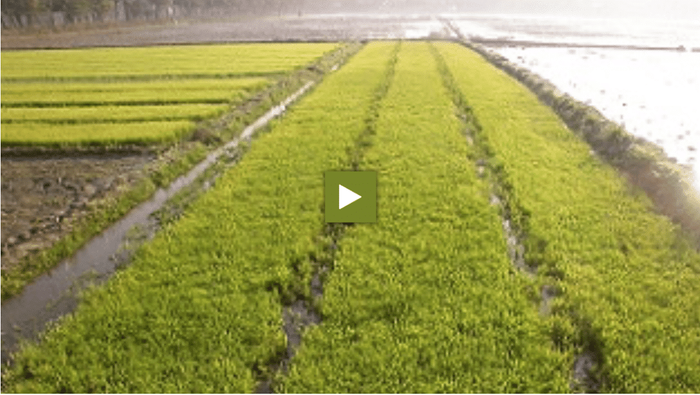When the rice is broadcast, many seeds are wasted. To protect them, you should make a seedbed two weeks before transplanting.
Farmers often broadcast before the rain starts. But when the rain comes later, the seeds ruin in the soil and the farmers have to sow again.
Transplanting
Transplanting saves seeds, water and nutrients. Because of transplanting you are able to grow out the best seedlings. It gives rice a big advantage towards weeds and makes managing the crop easier.
Making a seedbed
Seedlings don‘t have to have more than four leaves when they are transplanted. Make the seedbed close to the water, in the sun and near your field. You should make sure that it isn‘t close to otheranimals. Avoid sandy soils, because they dry out to quickly. On valley bottom rainwater runs down the slopes. Therefore you should make the longer side of the seedbed vertical to the slope.
Make the seedbed one metre wide and ten metres long. This size is easy to work with. Prepare and level it, so the rain doesn‘t wash away all of the seeds. Break the lumps and compost, so that the seeds can spread easily and the roots grow strongly. Make the seedbed higher than 10 metres and let the water run down. In irrigated land, level the seedbeds and puddle the soil to allow good watering.
For a seedbed that is 10 metres high, you need two kilogramms of seeds. The seedbed can transplant a field of 500 square metres. Pre-germinate seeds with soaking them in a cloth in a jute bag for a day. Remove the seedlings from water and keep them where the air gets to them for one to two days until they sprout.
Protect the seeds with soil. A handful of powdered cow manure is going to improve the soil and keeps the birds away. Cover the soil with straw to keep the seeds moist and to protect them from birds. Remove the straw after 3 to 4 days. Use branches to build a protective shelter about one and a half metre above the seedbed. Protect the shelter with palm leaves and water the seedbed regularly. Within one week the seedbed is going to be strong and you are able to remove the shelter.



















